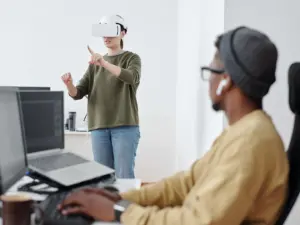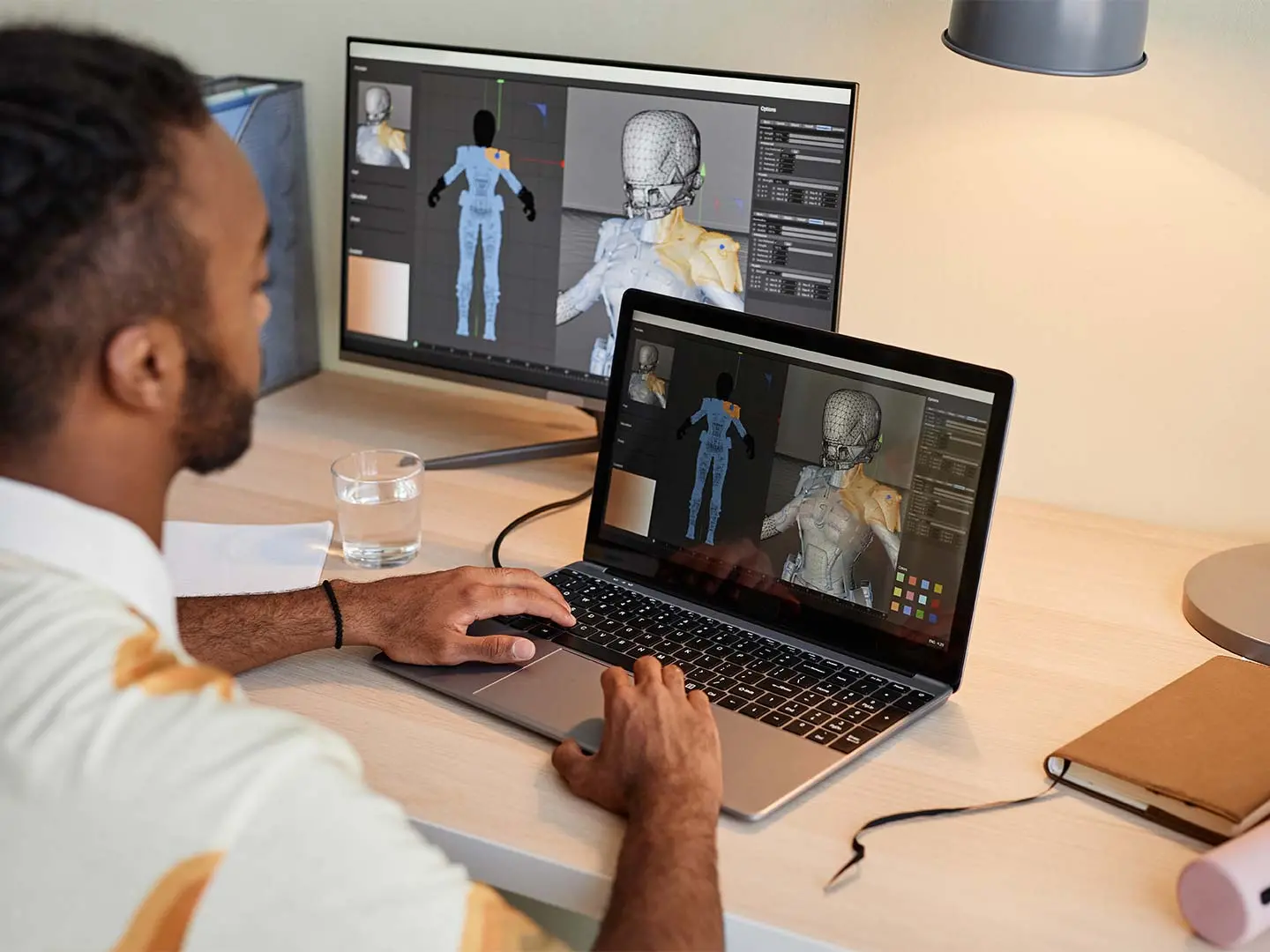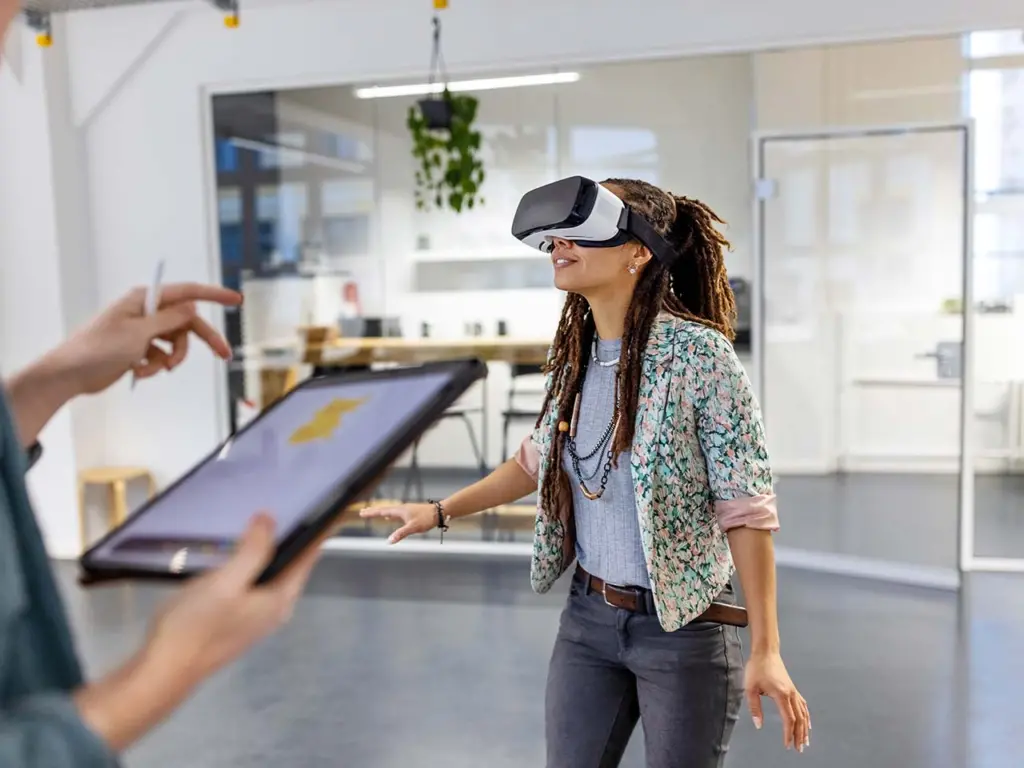To thrive in hyper-connected, experience-driven markets, organizations need to create visually rich, unique customer experiences. Meaningful customer experiences are vital to the success of every organization, and aligning business strategies with the needs of customers is essential. Forward-thinking companies are seeking new ways to establish a presence in online marketplaces and create new value for their complex products with digital solutions.
Vervint’s Configuration Services Team has helped many organizations transform their selling process to generate new value. So we connected with Jesse David, Kyle Jansens, Jon Vinsko, Charles Lentz, and several other experts to discuss 10 innovative ways organizations can benefit from implementing digital solutions using the Unity platform.
What Is Unity?
Unity is a robust development program utilized by many industries, from gaming to manufacturing to architecture, to create interactive environments and tools. For example, Unity can be used to build video games, cinematics, product configurators and much more.
As a rendering engine, this powerful cross-platform software provides an interface that gives organizations access to all the essential tools needed for 2D and 3D development in one place. Developers leverage Unity to create products that allow users to develop and manage web plugins, consoles, mobile devices, virtual reality platforms, and more.

Bring Interactive Product Configurators to Life With Unity Software and Unity Developers
Below are some of the ways that businesses are using Unity to differentiate themselves in the market and create new value for their clients and consumers.
1. Create Custom Product Configurators
Creating a visually interactive customer experience is necessary in today’s digital universe. Consumers expect convenient, personalized experiences, especially when they are purchasing products that can be configured. At the same time, demand is increasing for customized products that meet the exact needs of consumers, both in B2C and B2B contexts.
As tailor-made products continue to rise in popularity, businesses are accelerating digital service development to meet this need. They are streamlining and enhancing the quoting, design and selling process of configurable products. They are establishing a presence in new online marketplaces. And they are doing this by implementing digital product configurators.
To ensure successful configurator deployment, organizations need to have a stable development platform, such as Unity, to deliver an exceptional buyer experience for complex products.
Unity, in particular, offers many benefits for businesses that are developing or upgrading their product configurator:
- Easy implementation of cross-platform product configuration solutions
- Powerful development tools
- Rapid prototyping
- Real-time iteration
- Advanced rendering engine
- Immersive product experiences
- Ongoing, innovative technology updates
- Numerous integration options
- Ability to create mobile, VR, AR, and web configurators for multiple platforms (e.g., Windows and macOS)

Product Configurators | Design Your Customer Experience
2. Create Digital Twins for IoT Product Testing and R&D
A digital twin is a virtual representation of a physical object, system, or process, mimicking its real-world properties and behaviors, including shape, status, and motion. These tools are full of data and can be used for many purposes, such as diagnostics and product monitoring to optimize asset performance and utilization. Digital twins (and the data they generate) represent an untapped resource for many manufacturing and internet of things (IoT)-capable organizations.
With a connected digital solution, organizations can take advantage of real-time data that uses simulation, machine learning and more to improve the speed and accuracy of decision-making. And by creating a digital twin of your manufacturing environment or IoT device, you can utilize a safe environment for testing without having to use physical products that can sometimes be dangerous or expensive to test on.
In Unity’s development environment, organizations can utilize digital twin solutions in the following ways:
- Operate and monitor
- Plan and optimize
- Training and guidance
- Design and build
Each of these solutions offers better opportunities for research and development (R&D), greater efficiencies and improved decision-making capabilities throughout the entire product lifecycle.
3. Generate Synthetic Datasets for Machine Learning Algorithms
Every business has data, but it is often difficult to manage. Because of this, most companies are not fully realizing the benefits their data can provide to the business. With clean data, automation and meaningful visualizations, organizations can gain actionable insights to guide critical business decisions. The use of statistical analysis, machine learning and predictive modeling can uncover patterns and empower business leaders.
Recently, synthetic datasets have helped organizations reimagine data solutions by minimizing the need for costly and time-consuming procurement of real data. These synthetic datasets can be used for testing product or operational data to validate models against the behavior of real-world data and train machine learning models and increase their accuracy and effectiveness.
Using Unity, businesses can simplify collaboration between synthetic data and machine learning algorithms to improve the speed of iteration on data experiments. As organizations perform more (and faster) experiments with synthetic data, they can create better datasets that produce better results.

Data Analytics Consulting | Actionable Insights for Growth
4. Create a 3D Virtual Marketing and Sales Tool
To achieve and exceed their e-commerce goals, organizations are building interactive ways for consumers to view and even configure products. With Unity, businesses can market complex products in engaging, effective ways by creating an interactive planning, sales, and marketing platform that generates3D product imagery and configurable models in a virtual environment.
By launching and supporting a virtual experience, companies empower customers with the ability to explore and validate designs with realistic renderings. This new engagement channel becomes an efficient marketing and sales tool full of high-quality assets including visualizations, 3D configurators, digital media, videos and more.
5. Develop Human-Machine Interfaces (HMI) for Machines and Products
A human-machine interface (HMI) is software or hardware that provides a visual interface used by a person to communicate with and control a machine, system, or device. A well-designed HMI system brings more visibility to operations within an organization and provides access to real-time data about products and machines. Using Unity, organizations can enhance their HMI experience, from design to deployment, by seamlessly connecting development processes. And by providing highly intuitive consoles, your HMI system can control equipment and keep track of how it is performing within a single place.
Some additional benefits of developing an HMI using Unity include:
- Increased visibility
- Accelerated UI prototyping
- Enhanced efficiency
- Decreased downtime
- Improved usability
6. Create VR Training to Speed Up Your Onboarding Processes
The COVID-19 pandemic significantly impacted workforces and educational systems in many ways. Organizations had to rethink and rewrite the procedures of the workplace. Work environments became remote, transforming employee experiences, especially interviewing, onboarding, and training. To be successful with new working arrangements, companies need to understand that there are unique challenges and opportunities with acquiring, onboarding, and retaining top talent.
One way to improve the employee experience is to explore new digital solutions, such as using augmented reality (AR) or virtual reality (VR) training environments. By implementing immersive virtual training, employees can be more engaged and retain content better. Organizations can create and scale highly customized training and learning resources that can also be deployed remotely across devices. Immersive training not only speeds up the onboarding process but also gives organizations increased flexibility and more viable ways to minimize risk and measure results.

Successfully Onboard Developers in a Virtual Workplace
7. Use VisualLive AR for Construction
Leveraging technology to virtually bring buildings to life months before construction begins enables organizations to optimize the building process, from design and QA to facility management and more. Using Unity’s VisualLive software, construction companies can utilize augmented reality to create 3D visualizations that facilitate greater collaboration and field-to-office communication. This cloud-based software allows companies to easily import BIM or CAD models to convert into a visualization using HoloLens or a mobile device while also maintaining critical data, such as textures, materials and other information needed for architects in the field.
8. Simplify Space Planning for Manufacturing and Events
Organizations can use Unity software to build space planning tools that allow them to design spaces using 3D renderings, which provide high-quality layout visualizations. For example, businesses could create a virtual showroom or event experience to present their full product inventory to customers without needing the inventory physically present. And manufacturers can even create custom animations of machines being used within a space.

Desktop Configurators vs. Web-Based Product Configurators: Benefits and Limitations
9. AR for Guided Maintenance and Repair
Equipment maintenance is an important part of the product lifecycle. And in a world where products are becoming increasingly more complex, more challenges arise with fewer specialists able to maintain and repair them. Companies can turn to augmented reality, through Unity development, to create a remote assistance or maintenance solution that provides specialized expertise on-site anytime and from anywhere. A digital solution built with Unity helps organizations troubleshoot issues with a product by connecting with experts to get a faster diagnosis and fix rate, decreasing downtime, and increasing the amount of time and money saved for maintenance.
10. Gamification
There are numerous ways organizations can benefit from incorporating gamification into their business strategies. For example, businesses can promote their brand with a mobile experience or even a mobile game. Companies can also gamify their online presence with digital rewards and unlockables as a marketing tool or for existing customers. As one of the largest gaming engines, Unity provides outstanding graphic capabilities, high performance, and flexibility. And implementing gamification into products and services with the right expertise will help drive new revenue by creating new ways for clients to interact with your complex products.
Innovate and Drive Success With Product Configurators
At Vervint, we help businesses of all sizes strategically ideate, develop, deploy, support, and optimize digital solutions. Our uniquely qualified and highly skilled experts help companies create personalized customer experiences that distinguish them from competitors, generate new revenue and inspire innovation. Our cross-functional Configuration Services Team has years of experience building digital solutions using the Unity platform and many other software development tools.
We can meet you wherever you are in your solution process, from planning and creating your digital product catalog to implementing and maintaining innovative Unity solutions. As a strategic partner for your organization, we do more than just deliver digital products; we help you achieve your business goals with design thinking, deep expertise and dedication to your success.

Schedule a Demo with Our Unity Consultants
Our Configuration Services Team is ready to help you move forward and start driving new revenue.


